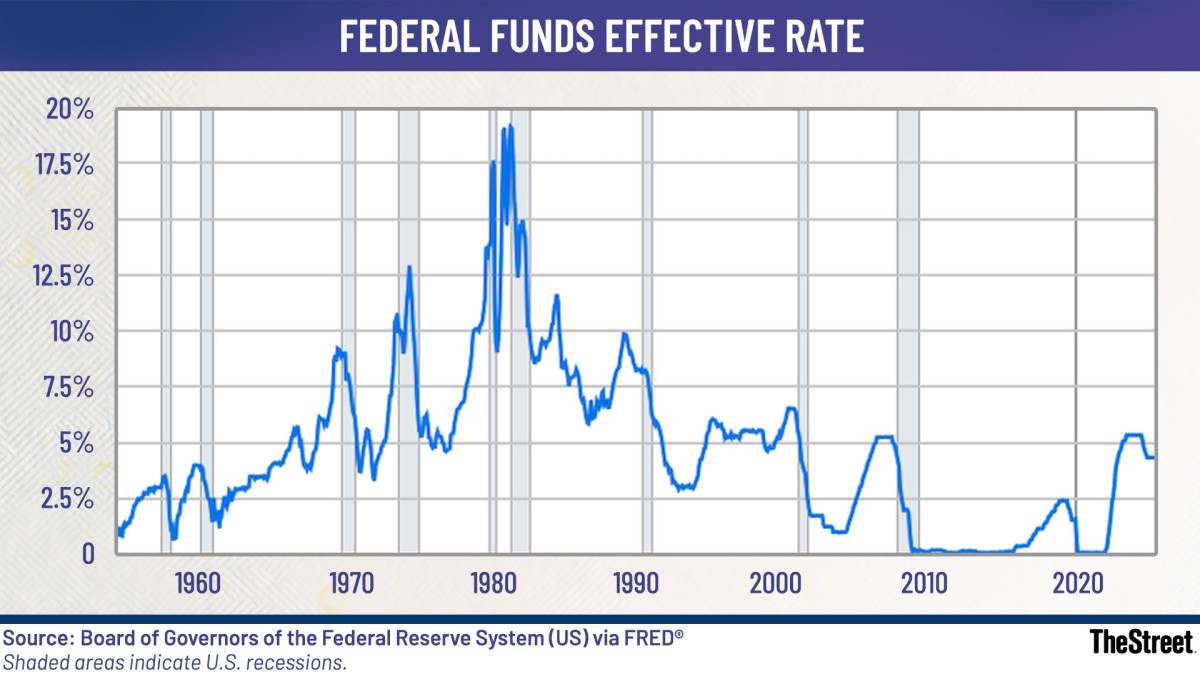It all adds up.
The sticker shock zapping your wallet while buying beef for the Labor Day cookout (thus prompting that menu switch to chicken) is linked to whether the Federal Reserve will cut interest rates next month.
So does all that buzz around the White House’s controversial tariffs.
Related: Morgan Stanley makes major change to Fed interest rate cut forecast
Yep. It’s all about inflation.
Here’s why the upcoming Personal Consumption Expenditures (PCE) Price Index moves not only markets, but also the high interest rates on those credit cards you use to buy groceries like chicken wings (instead of ribs).

Source: Board of Governors of the Federal Reserve System
Why the Fed loves the PCE
The Federal Reserve relies on the PCE, not the Consumer Price Index (CPI), to set interest rates.
Here’s why it matters for investors, consumers, and the next move in monetary policy:
- The PCE may not create as much buzz on Main Street as the CPI, but on Wall Street and inside the Federal Reserve, it’s the statistic that counts most.
- Published monthly by the Bureau of Economic Analysis, PCE measures the prices of goods and services that U.S. households consume.
- It covers everything from food to rent to health care, capturing a broader picture of the economy than does CPI.
- The Fed has explicitly tied its 2% inflation target to PCE, making each release a key driver of interest rate expectations.
“PCE is the single most important inflation data point for the Fed,” Morgan Stanley Chief Economist Michael Gapen said. “Markets can’t afford to ignore it, because a surprise here changes the entire interest rate outlook.”
Why PCE over CPI?
At the heart of the distinction is methodology:
- CPI tracks a fixed basket of goods and services, ignoring how consumers shift spending when prices rise.
- PCE, in contrast, adjusts for those substitutions.
- If beef prices spike, households might buy chicken instead. PCE reflects that shift, while CPI still measures beef.
- PCE’s flexibility gives it a reputation as a more realistic gauge of inflationary pressure.
- PCE also includes expenditures made on behalf of households, such as employer-sponsored health insurance, further broadening its reach.
Stock market reactions: why investors care
For traders, the PCE report is a market-moving event. Because the Fed’s dual mandate centers on balancing maximum employment and stable prices, PCE anchors the price stability/inflation side.
- Hotter-than-expected PCE readings: Treasury yields spike, stocks often sell off, and the dollar strengthens on expectations the Fed will keep rates elevated.
- Cooler-than-expected PCE readings: Bonds rally, equities climb, and investors price in earlier rate cuts.
Why the PCE matters now
With inflation easing from its 2022 peak but still above 2%, the PCE remains the Fed’s navigation guide to interest rate cuts.
Markets are watching to see if that price growth is cooling enough to justify rate cuts later this year.
For households, CPI may still feel more relatable.
More Federal Reserve:
- What the star-studded Jackson Hole Fed meeting means to you
- Producer price inflation shocks Fed interest rate cut bets
- White House taps more potential candidates to head the Fed
- White House expands search to replace Fed Chair Powell
- Trump makes surprise decision on Federal Reserve
But for the Federal Reserve, the U.S. monetary policymakers charged with balancing economic growth and stable prices, the PCE vibes count.
The Fed last cut rates in December. It has been keeping the key Federal Funds Rate steady at 4.25% to 4.50% to “wait and see” the impact of tariff inflation on the economy.
As Gapen noted, “The Fed isn’t trying to measure how inflation feels. It’s trying to measure how inflation actually operates in the economy. That’s why PCE rules the day.”
The Fed opens the door to September interest rate cut
Fed Chair Jerome Powell indicated Aug. 22 the Fed could begin reducing interest rates if the labor market continues to soften, while still “proceeding carefully.”
Markets interpreted that as a green light for a September cut in the benchmark Federal Funds Rate if the Aug. 28 PCE and the July jobs numbers on Sept. 5 don’t re-accelerate.
Related: Exclusive: What the experts think about Powell’s new comments on Fed interest rate cuts
Economists, including Morgan Stanley’s Gapen, have also shifted to expecting a 0. 25% September cut in the benchmark Federal Funds Rate.
The widely watched CME Group FedWatch Tool says there’s an 85.1% chance that there will be a 0.25% cut in the funds rate when the Federal Open Market Committee meets Sept. 16-17.
June PCE data: Inflation uptick raises concerns
- Headline June PCE rose 0.3% month-over-month, bringing the year-over-year rate to 2.6%. This is up from 2.4% in May, marking the highest level since February, the BLS reported.
- Core PCE, which excludes food and energy, also increased 0.3% on the month, taking the annual rate up to 2.8%, slightly above May’s figure and above most forecasts.
The July PCE is expected to remain steady at 2.6%.
PCE and you: the circle of life
The Federal Funds Rate sets the pace for interest rates in the United States.
In short, it represents the nation’s cost of borrowing money.
So we’re back to grocery shopping with credit cards, then going home to pay the monthly car and student loan bills before lighting up the grill (also bought with those plastic cards in your back pocket or backpack).
Enjoy those wings!
Related: Can the president fire a Federal Reserve governor?
#Looming #inflation #report #major #impact #wallet